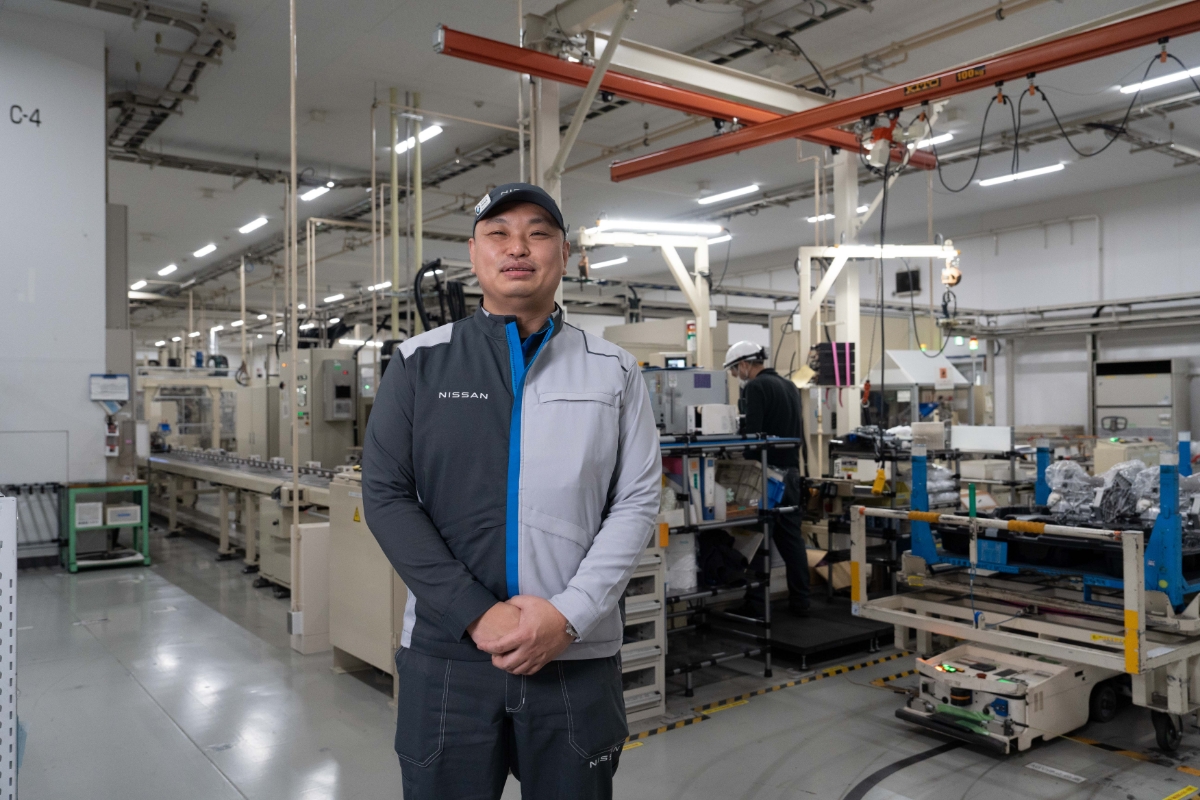Nissan Passionate Challengers
EPISODE 01
The heart of electrified vehicles:
Mass producing high-quality motors
with ingenuity at every step
Yoshiyuki Tanaka
Axle and Electric Powertrain Section
Yokohama Plant, Manufacturing Dept. 1
Even the smallest scratch goes unnoticed
The Axle and Electric Powertrain Section of our Yokohama Plant, whose origins link back to the world’s first mass-produced EV, the Nissan LEAF, is responsible for manufacturing motors used in e-POWER vehicles such as the Serena, Kicks, and Note; as well as hybrid motors used in the Skyline. Veteran staff member, Yoshiyuki Tanaka, uses his experience in manufacturing the first-generation Nissan LEAF’s motor to oversee the section’s operations and quality control.
“The coiled wire used in the motor cannot have any damage to the coating. So, the manufacturing process starts with confirming every step and piece of equipment passes strict requirements. This also extends to transportation logistics.”

